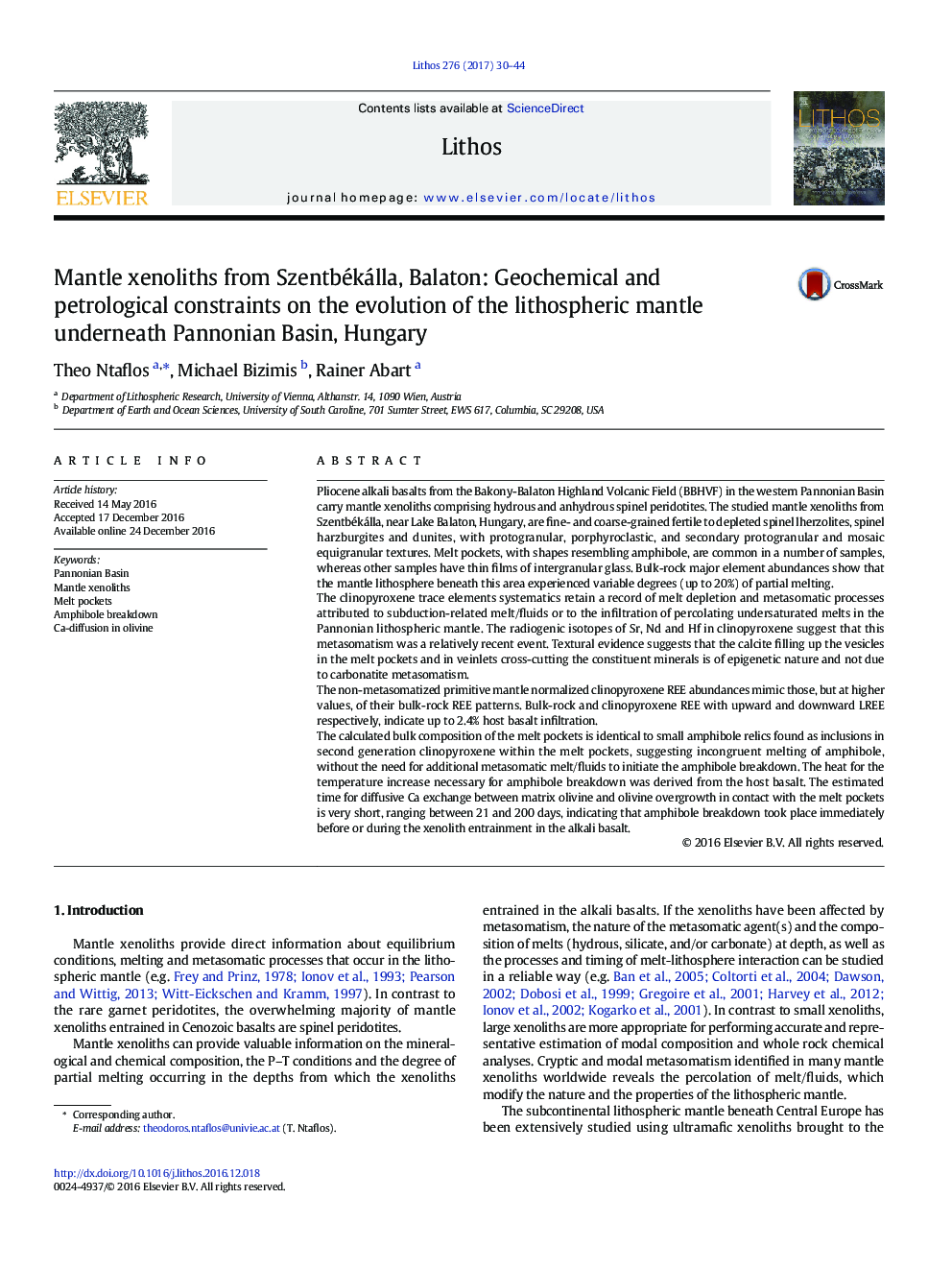| کد مقاله | کد نشریه | سال انتشار | مقاله انگلیسی | نسخه تمام متن |
|---|---|---|---|---|
| 5784106 | 1638634 | 2017 | 15 صفحه PDF | دانلود رایگان |

- Integrated bulk rock, mineral data and Sr, Nd, Hf isotopes of cpx used to study processes of melting and metasomatism
- Nature of the metasomatic agent(s) and host basalt infiltration
- Incongruent amphibole melting and the origin of melt pockets
- Estimation of the duel time for the melt pocket formation
Pliocene alkali basalts from the Bakony-Balaton Highland Volcanic Field (BBHVF) in the western Pannonian Basin carry mantle xenoliths comprising hydrous and anhydrous spinel peridotites. The studied mantle xenoliths from Szentbékálla, near Lake Balaton, Hungary, are fine- and coarse-grained fertile to depleted spinel lherzolites, spinel harzburgites and dunites, with protogranular, porphyroclastic, and secondary protogranular and mosaic equigranular textures. Melt pockets, with shapes resembling amphibole, are common in a number of samples, whereas other samples have thin films of intergranular glass. Bulk-rock major element abundances show that the mantle lithosphere beneath this area experienced variable degrees (up to 20%) of partial melting.The clinopyroxene trace elements systematics retain a record of melt depletion and metasomatic processes attributed to subduction-related melt/fluids or to the infiltration of percolating undersaturated melts in the Pannonian lithospheric mantle. The radiogenic isotopes of Sr, Nd and Hf in clinopyroxene suggest that this metasomatism was a relatively recent event. Textural evidence suggests that the calcite filling up the vesicles in the melt pockets and in veinlets cross-cutting the constituent minerals is of epigenetic nature and not due to carbonatite metasomatism.The non-metasomatized primitive mantle normalized clinopyroxene REE abundances mimic those, but at higher values, of their bulk-rock REE patterns. Bulk-rock and clinopyroxene REE with upward and downward LREE respectively, indicate up to 2.4% host basalt infiltration.The calculated bulk composition of the melt pockets is identical to small amphibole relics found as inclusions in second generation clinopyroxene within the melt pockets, suggesting incongruent melting of amphibole, without the need for additional metasomatic melt/fluids to initiate the amphibole breakdown. The heat for the temperature increase necessary for amphibole breakdown was derived from the host basalt. The estimated time for diffusive Ca exchange between matrix olivine and olivine overgrowth in contact with the melt pockets is very short, ranging between 21 and 200Â days, indicating that amphibole breakdown took place immediately before or during the xenolith entrainment in the alkali basalt.
Journal: Lithos - Volume 276, 1 April 2017, Pages 30-44